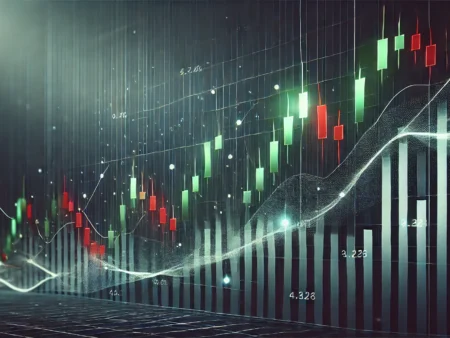What is CFD Trading and How Does it Work?
CFD trading, or Contract for Difference trading, is a popular method in the financial markets that allows traders to speculate on the price movements of assets without actually owning the underlying asset. It offers flexibility in trading a wide range of financial instruments, such as stocks, commodities, indices, and currencies, in both rising and falling markets. Here’s an in-depth look at how CFD trading works, the benefits, and the risks involved.
1. What is CFD Trading?
A CFD is a financial contract between a trader and a broker that reflects the price difference of an underlying asset between the opening and closing times of a trade. Instead of buying or selling the asset (like shares or commodities), you speculate on whether the price will go up or down.
- Buying (Going Long): If you believe the price will rise, you open a “long” position. If the price increases, you can sell the CFD at a higher price and profit from the difference.
- Selling (Going Short): If you believe the price will drop, you open a “short” position. If the price falls, you buy the CFD back at a lower price, keeping the difference as profit.
In both cases, profits or losses are determined by the size of the price movement and the size of the position taken.
2. How Does CFD Trading Work?
Here’s a step-by-step breakdown of how CFD trading works:
a) Choose the Asset
CFDs are available on a wide variety of markets, including:
- Stocks: Trade shares of individual companies without owning them.
- Commodities: Speculate on the price movements of commodities like oil, gold, or silver.
- Indices: Trade on the performance of indices like the S&P 500 or FTSE 100.
- Forex: Trade currency pairs like EUR/USD or GBP/JPY.
b) Decide to Buy or Sell
Once you choose an asset, you decide whether to “buy” or “sell” based on your market forecast:
- Buy: If you think the price of the asset will go up.
- Sell: If you think the price will go down.
c) Set Position Size and Leverage
With CFDs, you can take a position size larger than your initial deposit through leverage. Leverage allows you to control a bigger trade with a smaller amount of capital (called margin). For example, with a 10:1 leverage, you could control $10,000 worth of assets with just $1,000 of your own money.
- Leverage can magnify both profits and losses. If the market moves against your position, your losses could exceed your initial investment.
d) Monitor and Close the Trade
Your position remains open until you decide to close it, either to lock in a profit or cut a loss. The difference between the opening and closing price of the CFD will determine the profit or loss.
3. Key Features of CFD Trading
a) Leverage
One of the major attractions of CFD trading is leverage. It allows traders to open positions much larger than their capital. However, while leverage amplifies potential profits, it also increases potential losses.
b) Margin Requirements
CFD traders only need to deposit a percentage of the full trade value, known as margin. There are two types of margin:
- Initial Margin: The deposit required to open a position.
- Maintenance Margin: If your open trade moves against you and your account equity falls below a certain threshold, you may need to deposit more funds to keep your position open.
c) No Ownership of Assets
CFD trading does not involve ownership of the underlying asset. For example, if you trade CFDs on Apple stock, you don’t actually own Apple shares, but you profit from the price movement.
d) Variety of Markets
CFD brokers typically offer access to multiple markets worldwide, including stocks, commodities, indices, forex, cryptocurrencies, and more. This gives traders the flexibility to diversify their portfolios.
e) Ability to Short
CFDs allow traders to profit from falling markets by taking a short position. This is a key advantage over traditional investing, where profiting typically requires markets to rise.
4. Benefits of CFD Trading
- Access to Global Markets: With a single platform, traders can access multiple asset classes from around the world.
- Leverage: The ability to trade with leverage allows for greater exposure to the market with less capital.
- Shorting Markets: Traders can profit in both rising and falling markets.
- No Stamp Duty: In many countries, CFDs do not require traders to pay stamp duty since they do not involve ownership of the asset.
5. Risks of CFD Trading
While CFD trading offers many advantages, it also comes with significant risks:
- High Risk Due to Leverage: Although leverage can increase profits, it can also magnify losses. It is possible to lose more than your initial investment.
- Market Volatility: Prices of underlying assets can change rapidly, leading to sudden losses, especially when trading with leverage.
- Overnight Costs: If you hold CFD positions overnight, you may incur financing charges, which can eat into your profits.
- Counterparty Risk: Since CFD trades are executed with a broker, there’s a risk that the broker might fail to fulfill its obligations.
6. Example of CFD Trading
Let’s say you want to trade a CFD on the price of gold, which is currently $1,500 per ounce. You believe the price will rise, so you decide to buy 10 contracts of gold CFDs. If gold’s price rises to $1,550, you can sell your position, earning $50 per contract, or $500 in total (before fees). Conversely, if the price drops to $1,450, you would lose $50 per contract, or $500.
7. Conclusion
CFD trading offers a flexible and powerful way to engage with financial markets. It allows traders to benefit from price movements in either direction without owning the underlying asset. However, due to the high leverage and volatility involved, it is essential to approach CFD trading with caution, proper risk management strategies, and a thorough understanding of market dynamics.
Whether you’re a beginner or an experienced trader, CFDs provide a unique opportunity, but it’s important to stay informed, use demo accounts to practice, and be aware of the risks. Always consider seeking advice from financial professionals before diving into leveraged trading.
CFD trading is complex, and each trader’s needs and strategies will vary. Always ensure that you’re trading within your risk tolerance.











